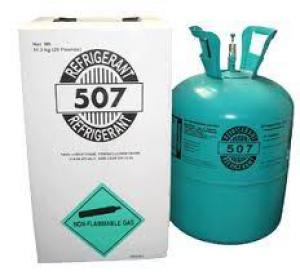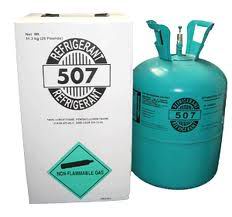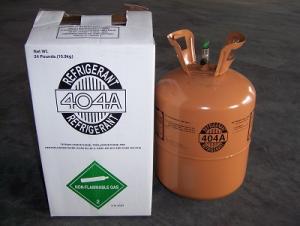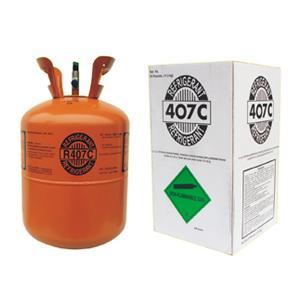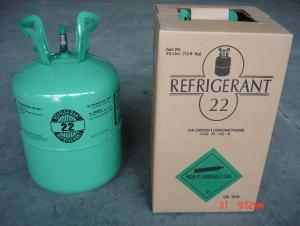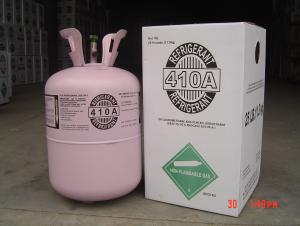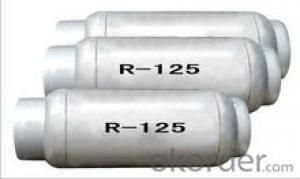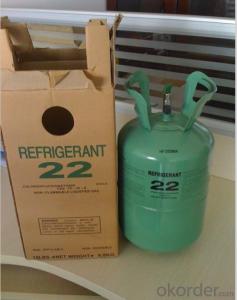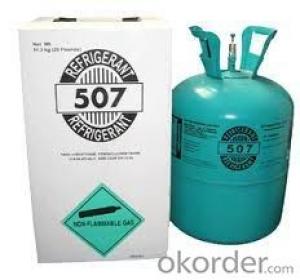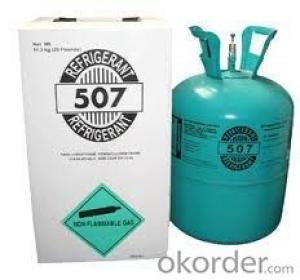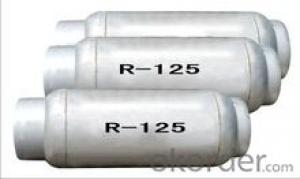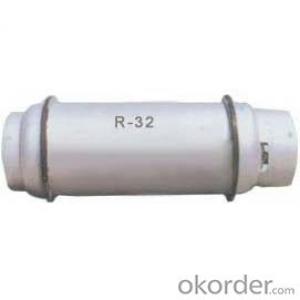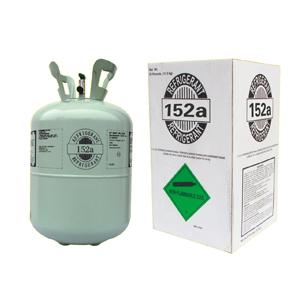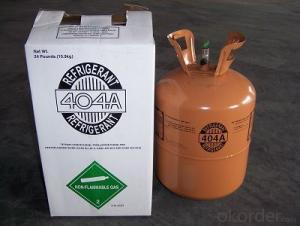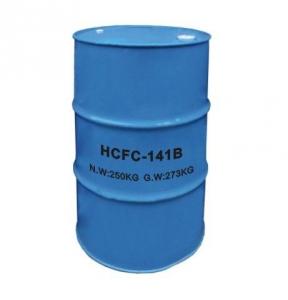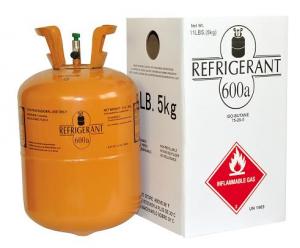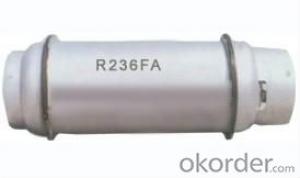R507 Gas in Diposable Cyl
- Loading Port:
- Ningbo
- Payment Terms:
- TT OR LC
- Min Order Qty:
- -
- Supply Capability:
- 1000MT m.t./month
OKorder Service Pledge
Quality Product, Order Online Tracking, Timely Delivery
OKorder Financial Service
Credit Rating, Credit Services, Credit Purchasing
You Might Also Like
| Property of chloride : |
| ||||||||||||||
| Packing: | Disposable cylinder 25lb/11.3kg; Recyclable cylinder 400L, 800L, 926L; ISO-Tank. | ||||||||||||||
| |||||||||||||||
| Quality standard : |
| ||||||||||||||
R-507 is the leading substitute for R-22 and R-502 in industrial refrigerant application
- Q: What is organic matter?
- Green plants use light to provide energy, in the chloroplast synthesis of starch and other organic matter, and the light energy into chemical energy stored in organic matter, this process is often said that photosynthesis.
- Q: What does organic and inorganic mean?
- [Inorganic] inorganic is inorganic compounds referred to, usually refers to non-carbon compounds. A small number of carbon-containing compounds, such as carbon monoxide, carbon dioxide, carbonates, cyanides, etc. are also inorganic. Inorganic materials can be divided into oxides, acids, alkalis, salts and so on. Organic compounds Definitions Organic compounds usually refer to carbon-containing compounds, or hydrocarbons, and their derivatives, are collectively referred to as organic compounds.
- Q: Why does the molecular atom compound do not belong to the life structure
- Life structure is composed of CHO as the main element through the covalent bond of the combination of hydrocarbons and their derivatives, and you said the molecular atomic compounds are usually atomic or ionic bond
- Q: China's largest asphalt production base where
- Oil asphalt is the residue after distillation of crude oil. According to the degree of extraction of different, at room temperature into a liquid, semi-solid or solid. Oil asphalt color black and shiny, with a high temperature. Because it is in the production process has been distilled to 400 ℃ or more, and thus contain little volatile components, but there may still be high-molecular hydrocarbons without volatile, these substances are more or less harmful to human health.
- Q: What is the difference between crude oil and asphalt?
- Asphalt is the residue of crude oil
- Q: Hydrocarbons and hydrocarbon derivatives are not all non-electrolytes
- Hydrocarbons are, derivatives are not necessarily, such as organic acids (formic acid, acetic acid, etc.)
- Q: Cracked
- It is almost impossible for this problem to look at your reaction conditions. Generally speaking, the alkane reaction is mainly difficult to decompose directly into ions
- Q: What is the most primitive person on earth?
- In the 4 billion years ago, the Earth's water environment, the atomic group into molecules, the formation of a new four-balance body, and the Earth in the formation process, has gathered a lot of interstellar organic molecules, these molecules combined into macromolecules, Of the gravitational field and the anti-gravitational field to find the appropriate combination of objects. Macromolecules, molecules and atoms are also dependent on the formation of the force field to find the appropriate combination of objects, the formation of a new complex four-force balance body, where the gravitational field to play a long-range attraction (5-20 atomic diameter), which It also limits the macromolecules to obtain the desired combination of objects on a large scale, so macromolecules are combined into a moving tissue form, the most primitive marine microorganism. The macromolecules that move can mainly use the method of orienting the electromagnetic force to gradually develop into the original tissue that can swim in the water, so they can obtain a large amount of food (four-force balance) and accumulate some molecules in the body , These molecules in the original microbial parent force field guidance, combined with the mother similar to the new micro-organisms, these primitive microorganisms is essentially a complex macromolecule formation of the four balance body, which is the prototype of biological gene replication.
- Q: What is the current status of carbon dioxide capture technology and how is it compared to plants that absorb carbon dioxide?
- I think it 's harder if the thing is to be industrialized. = Such as carbon dioxide hydrogenation into methane, after the methane transport or storage is also a relatively large problem bars And not to say that the hydrogenation of carbon dioxide into methane has been studied for a long time, but it does not seem to have developed any big news like ah There is also electrochemical reduction of carbon dioxide. It is relatively easy to produce formic acid in the aqueous phase, such as the Partially oxidized atomic cobalt oxide for carbon dioxide electroreduction to liquid fuel (Nature: Nature Publishing Group) recently made by Xie Yi. The But the separation of formic acid and water is also a more difficult thing ah. The
- Q: Are hydrocarbons all organic?
- A series of compounds with similar structures and different molecular composition of one or several "CH2" radicals are called the same series, and each member in the same series is called homologous, and the chemical properties of homologues are similar due to their similar structure. Their physical properties, often with the increase in molecular weight and regular changes.
Send your message to us
R507 Gas in Diposable Cyl
- Loading Port:
- Ningbo
- Payment Terms:
- TT OR LC
- Min Order Qty:
- -
- Supply Capability:
- 1000MT m.t./month
OKorder Service Pledge
Quality Product, Order Online Tracking, Timely Delivery
OKorder Financial Service
Credit Rating, Credit Services, Credit Purchasing
Similar products
Hot products
Hot Searches
Related keywords
